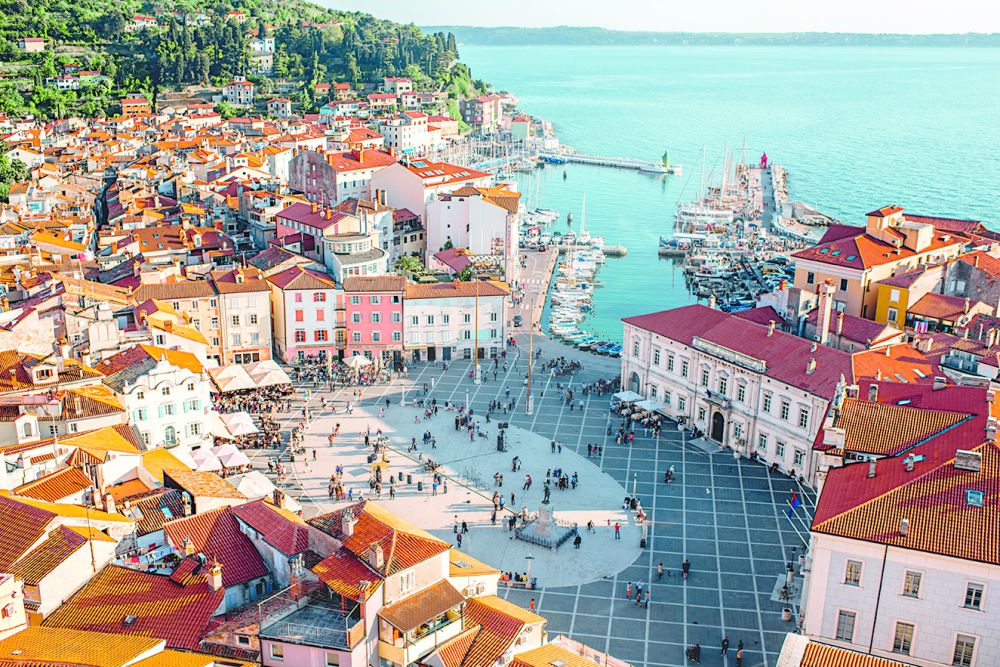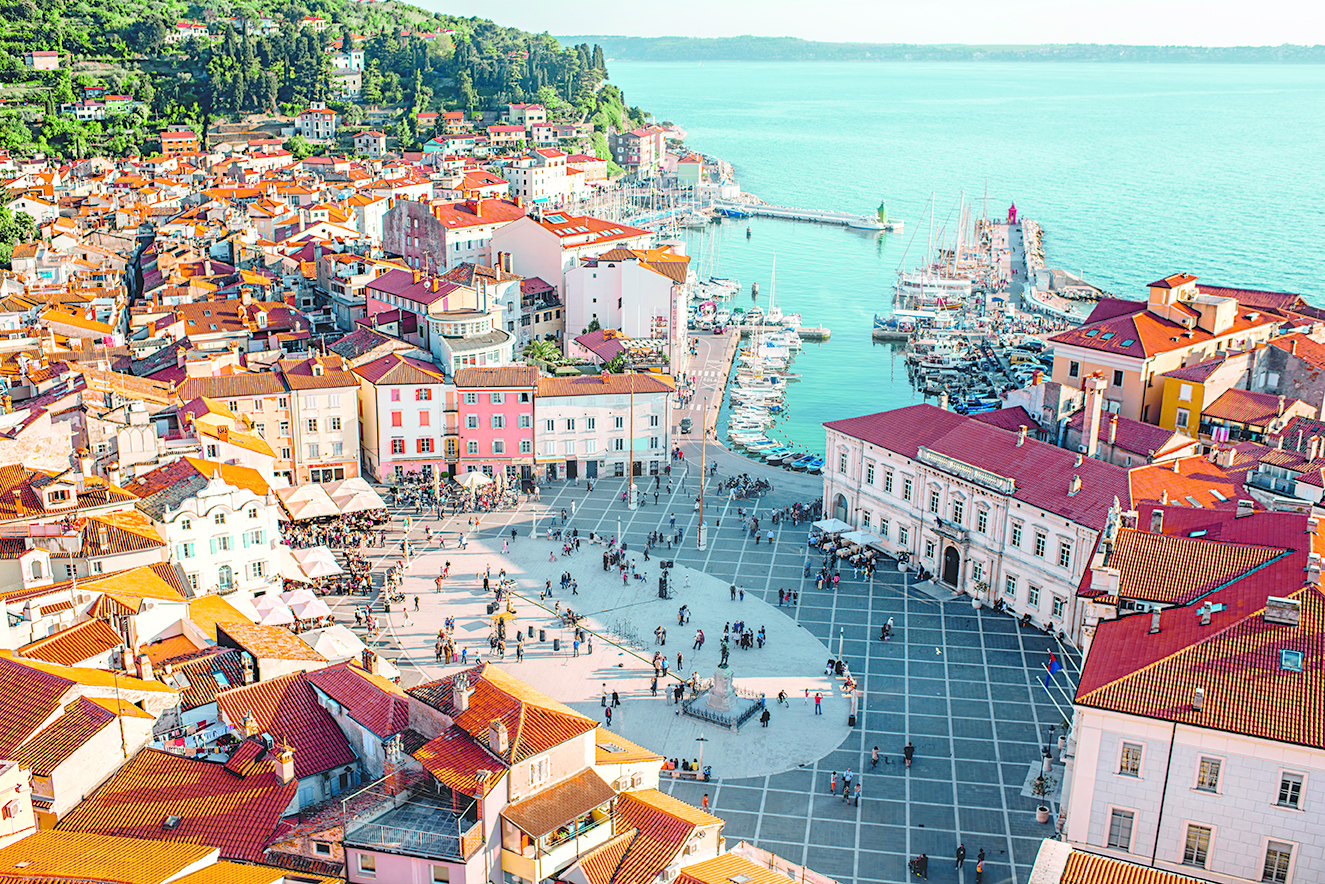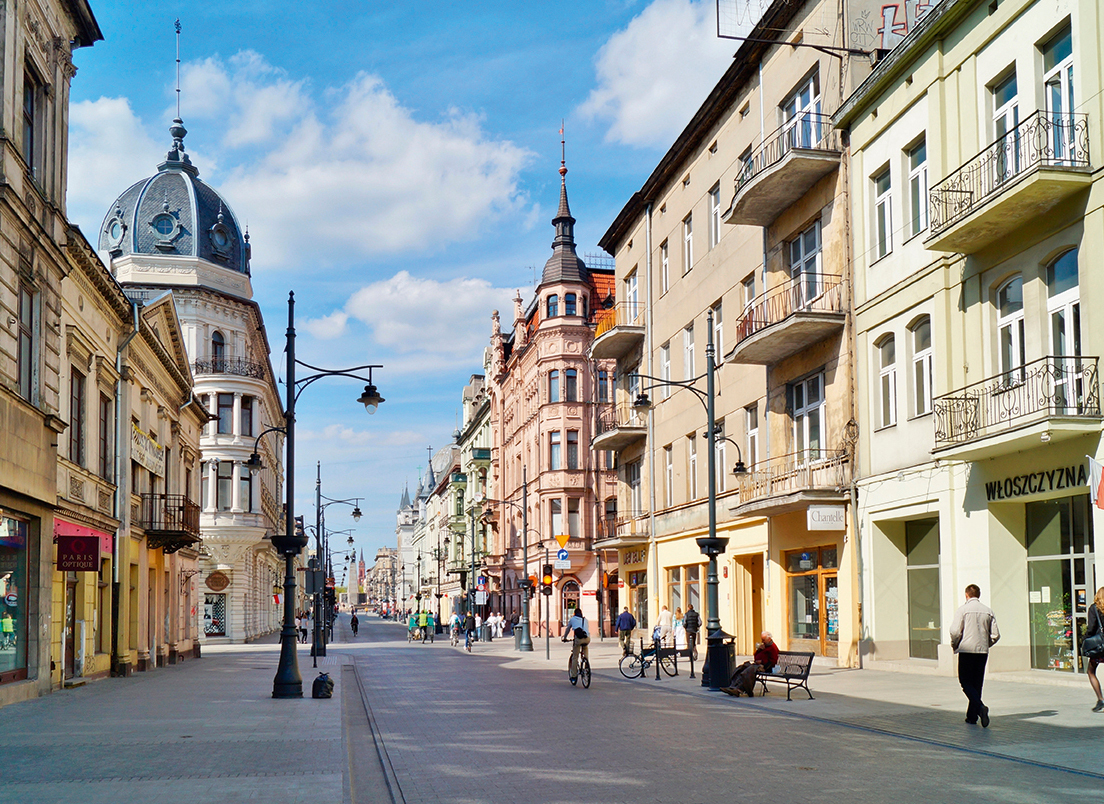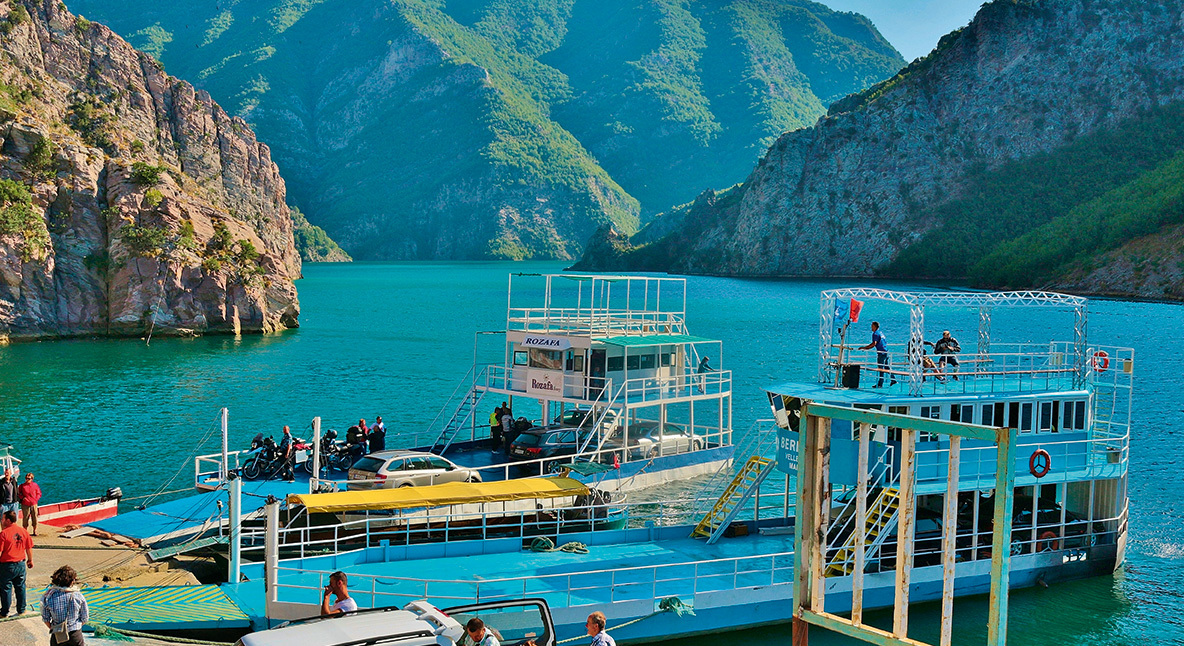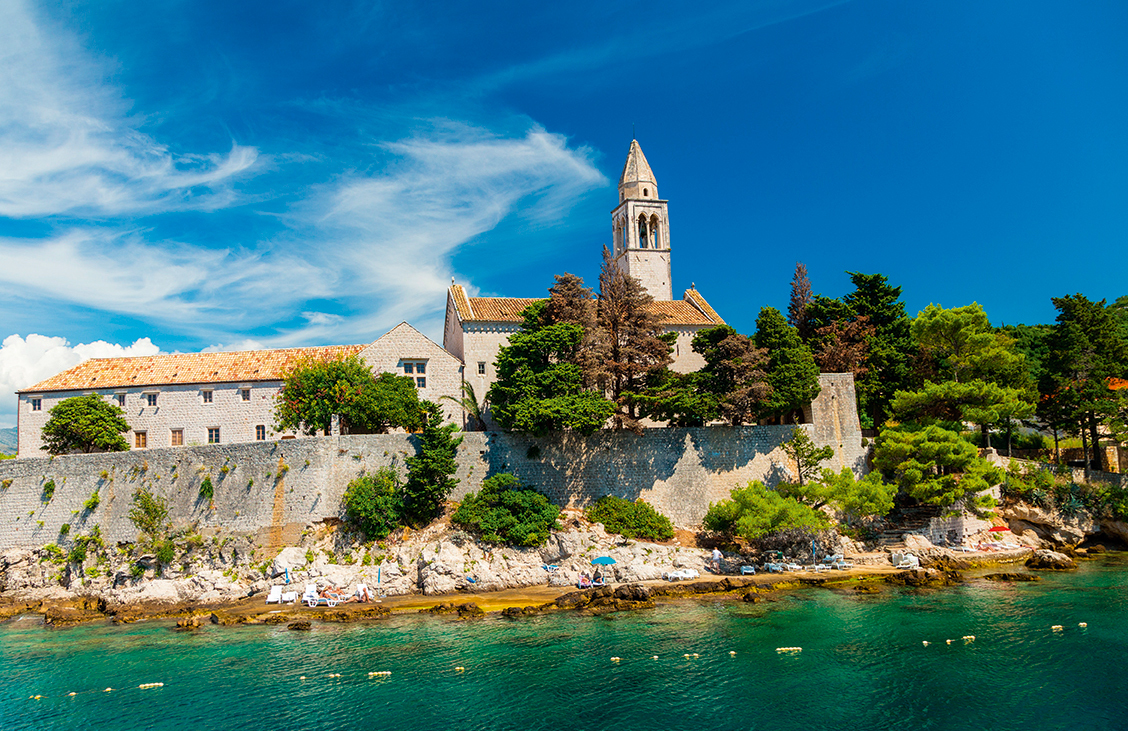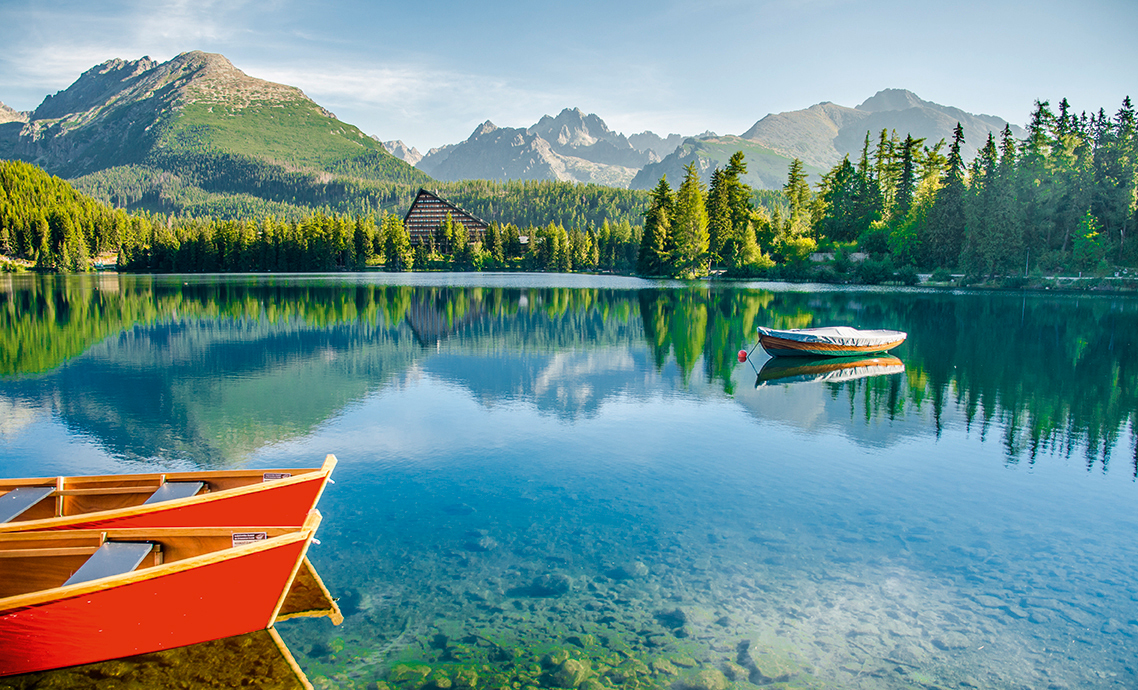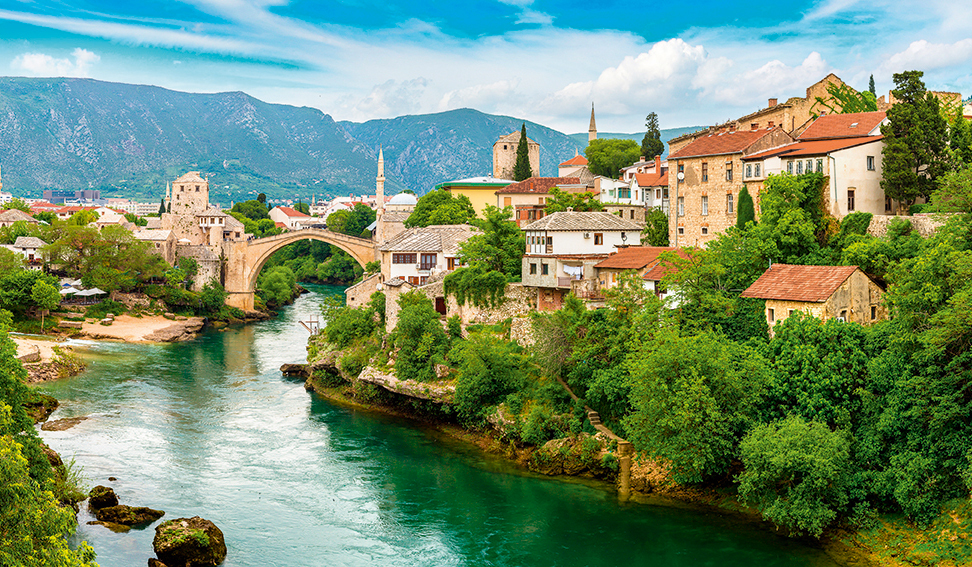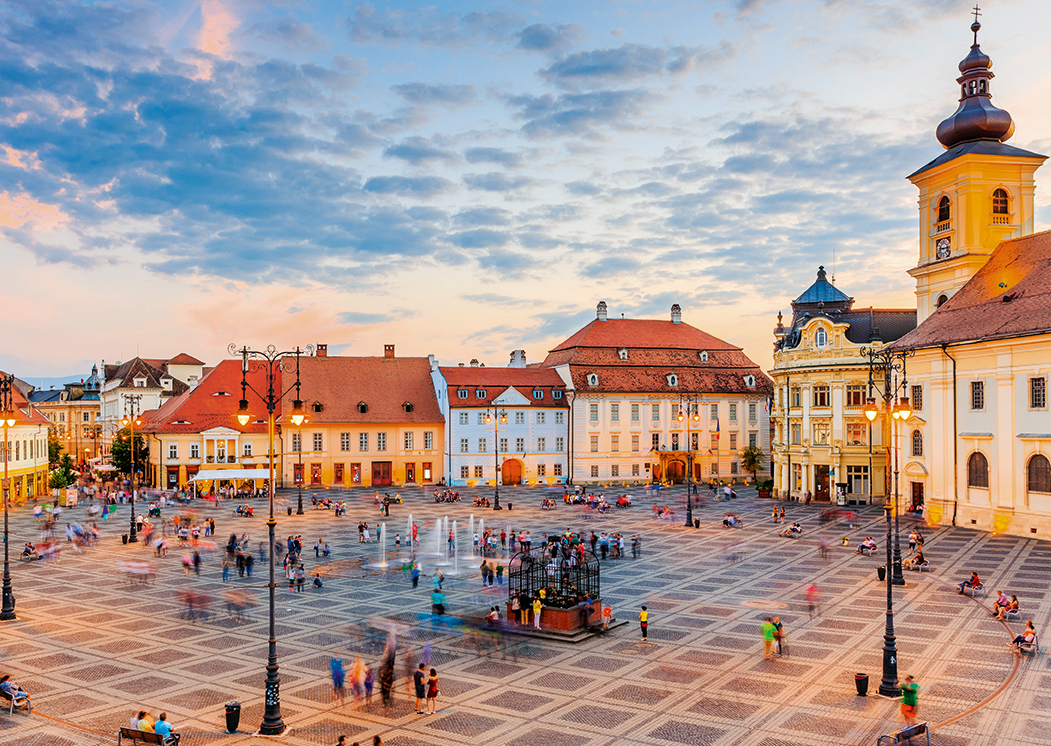Štrebské Pleso Slovakia (High Tatras)
In the 13th century, Štrebské Pleso, a vast glacial lake surrounded by the
snow-dusted peaks of the High Tatra
mountains, was handed over to the local peasants by the ruling Hungarian
royalty, who considered it useless as it was so remote. Today, it is one of
Slovakia’s most sought-after wellness
destinations, a great-value alternative
to the Alps for those seeking the peace
of rolling pine forests and the chance to bathe in natural thermal springs
beneath a cold, crisp sky studded with
stars.
There are plenty of gorgeous hikes
to choose from. In spring, Mlynická is carpeted with bluebells, edelweiss
and primroses nourished by the Skok Waterfall, which bounces through
the valley from rocky shelf to plateau,
leaving a spray of greenery in its wake.
The hike takes three hours, and if you’re
feeling brave, there are chains in place
that allow you to scale the waterfall and
discover the string of pure mountain
lakes at its peak. For something a little
shorter, head west from Štrebské Pleso to
Jamské Pleso, a crystalline lake that can
be reached in an hour on a trail winding
slightly uphill through the woods. Soothe
aching muscles with a visit to Novyé
Smokovec, a cutting-edge medical spa
located 15 minutes away by taxi, which
offers everything from Finnish saunasto oxygen therapy. For traditional
mountain comfort food such as venison
goulash with grilled dumplings, make
your way to Hotel Patria hotelpatria.sk
– a quirky chalet on the very edge of the
lake. Their alcoholic Tatra tea is just the
thing to send you into a dreamless sleep.

